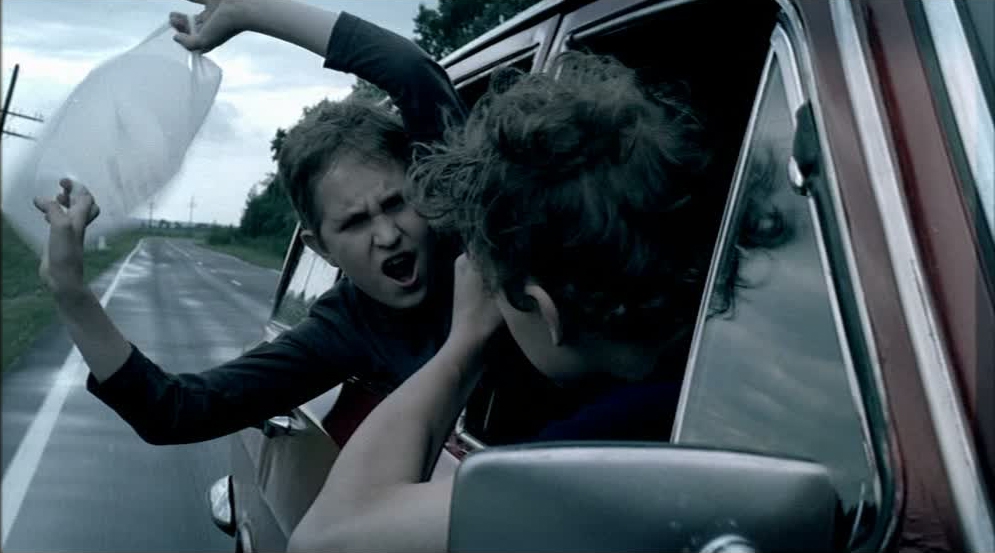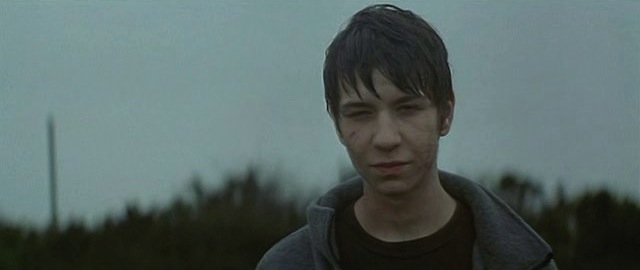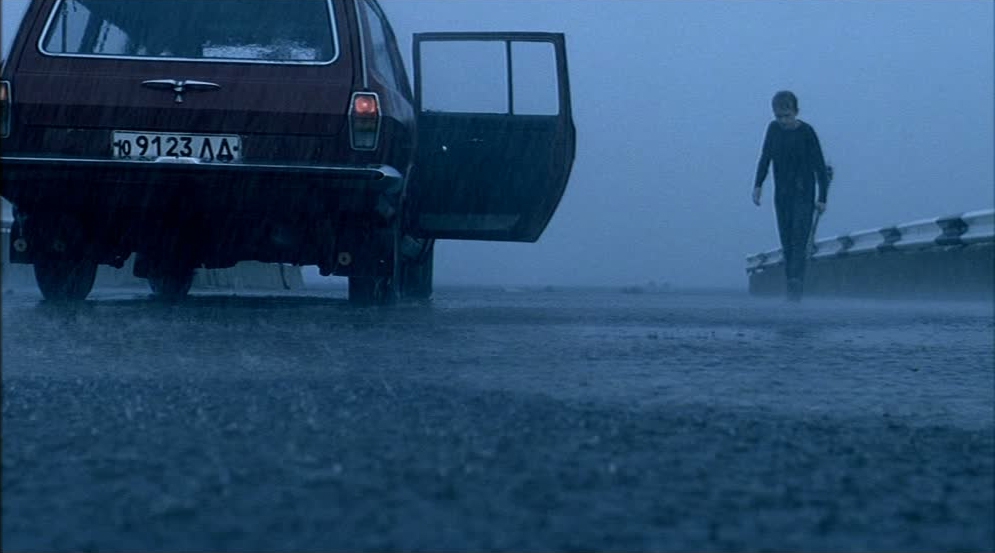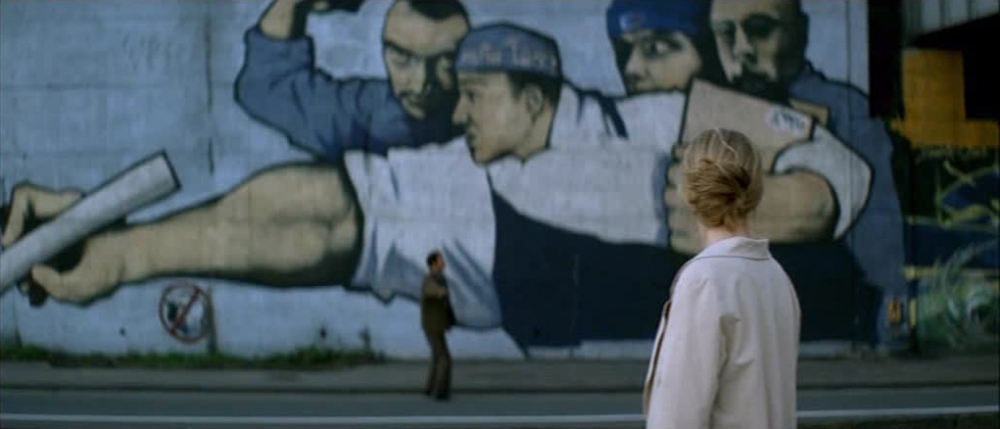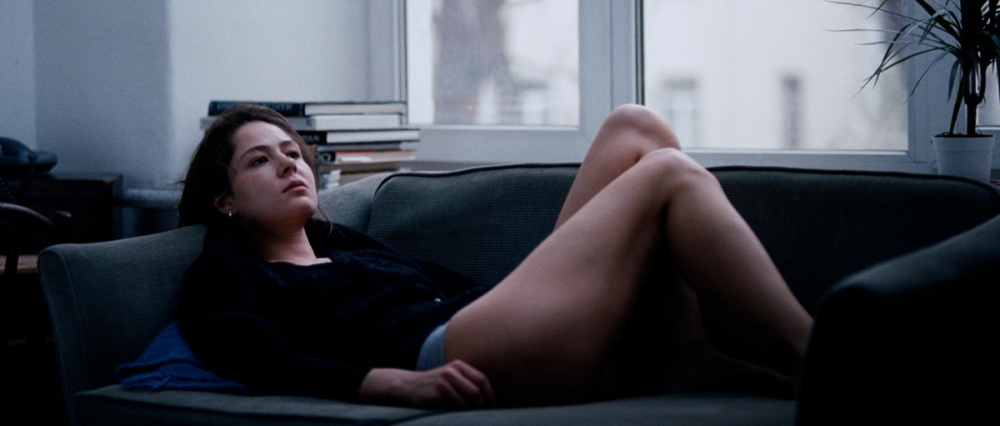Ten years ago, Russian filmmaker Andrey Zvyagintsev’s The Return emerged as the most auspicious debut film on that year’s festival circuit. Distinguished by its stunningly beautiful and symbolically loaded widescreen images of nature and its primal struggle between father and sons, the winner of Venice’s Golden Lion established Zvyagintsev as an international auteur to watch. Lesser known, but just as crucial to the film’s and Zvyagintsev’s continuing success is the visual handiwork of cinematographer Mikhail Krichman.
Director of Cinematography on all of Zvyagintsev’s films, including The Return, The Banishment, Elena and his latest Leviafan, the self-taught Krichman also shot the equally beautiful and elegiac Silent Souls (which won a cinematography prize at Venice 2010) and most recently, his first English-language production, Swedish actress-director Liv Ullmann’s adaptation of Miss Julie, which just finished production in Dublin.
Humble and self-effacing, the rising cameraman spoke to Keyframe about Russian light, the bleach-bypass process, collaborating with Zvyagintsev and their newest film, Leviafan, which, according to Krichman, may undergo a title change to reflect its less mythic and more realistic qualities.
Keyframe: Can you talk about your background? What brought you to cinematography?
Mikhail Krichman: When I finished my army service, I had to go to school and I didn’t know where to go, so I went to the same school my parents went to, which was the Graphic Arts Institute. My parents printed books. I liked the smell of the ink and I still like the smell of books. But then one day, I met a guy who was a cinematographer and I asked him if I could pull some cables or do anything for him. A year later, he called me when he was shooting a commercial and he asked me to pull focus. I made mistakes, but he didn’t say anything bad to me. Then he brought me to the editing room, and that was a kind of miracle. I became an editor for five to six years.
Then I was invited to make a documentary abroad about Santeria in Cuba. With the same guy, I went to Papua, New Guinea, Brazil, and India, filming the people. That was my first shooting experience with a video camera. And then I came back and would edit the documentaries. Then some music videos came my way, and then I met Andrei, and he invited me to make his first work for television called The Black Room. We did three episodes, and then he started to work on The Return.
Keyframe: What is your process like working with Andrei? Having already made four films with him, is it easier because you know each other so well?
Krichman: No, I wouldn’t say so. Because we change. Sometimes, we don’t even need to speak and we understand each other. But we spend a lot of time talking before, usually about half a year from the moment that I read the script to shooting. Sometimes, we draw [storyboards], but we don’t draw too much. On The Return, we tried to do drawings for the entire film. But I’m a bad drawer. So we made scans from the top of the set, with the position and the movement of the actors and the camera. Some compositions. But not the lenses, nothing so precise.
Then we like to discuss references. I was never that knowledgeable about paintings and I’d never been a photographer. So I began to learn about paintings and photography and art altogether with filmmaking. I appreciated this process, and it helped me to shoot and make pictures. As soon as you have those references, it’s like walking through a corridor, where you’re surrounded by these images, which you appreciate, and the more you go, the less you see things that you don’t really need.
Keyframe: What specific references did you draw from for The Return?
Krichman: There weren’t a lot of references. I remember Tim Roth’s The War Zone, shot by Seamus McGarvey, in terms of the look and also for the production design and costume.
Keyframe: Really? I don’t see it. Maybe in the colors?
Krichman: This is the trap of the reference. When people talk about references, you don’t understand how they used that reference for this particular movie. You know the book Reflections: Twenty-One Cinematographers At Work by Benjamin Bergery? It was the first book that I ordered from the ASC [American Cinematographer] magazine when I was trying to be a cinematographer. I got the idea for the bleach bypass process [which entails skipping the bleaching stage during processing color film] in The Return from this book. I showed it to Andrei and we decided to do it. When I met Benjamin Bergery at a film festival, I think it was Camerimage, I told him his book was a bible for me, and was responsible for the look of The Return and some other movies.
Keyframe: Can you talk more about your decision to do the bleach-bypass process? What was the aesthetic reason for it?
Krichman: It was a look that Andrei asked for. The look that we wanted to achieve was less color, less saturated, cool and muted colors, high contrast. I didn’t have any experience with the bleach bypass process, so I started doing research. People hadn’t tried it in Moscow yet, so I asked the producers to go to Prague to do a test. But they could only do a partial process, so it wasn’t good enough. Then we shot a test in Moscow and it wasn’t good enough. So I asked the lab in Moscow to switch off the bleaching bath completely, and that was the look we wanted to reach.
Keyframe: For The Return, I read that you shot in an area of Russia that had sunlight most of the time. Can you talk about shooting in this environment, and what you think it lent to the film?
Krichman: Yes, because we shooting around the 25th of June, the days were very long. And it was fairly north, so we have white nights. It’s the same as in Scandinavia. So we were lucky; we could shoot until 10 p.m. or 11 p.m.
Keyframe: Is the quality of that light particularly good for shooting?
Krichman: I am always amazed that people say they see the difference in this light. For me, the changes are not that crucial. Yes, the color contrasts and the contrasts between blacks and whites are very different, but I think it’s mostly imagination. I read a lot of articles form Sven Nykvist talking about all the different kinds of light he shot with Ingmar Bergman. Maybe it’s a different light, of course, when the sun goes down beneath the horizon and it keeps the sky lit and creates this soft ‘magic hour’ appearance. But in nature, I think the light belongs to the place or the landscape. For Leviafan, we used some of this light, but I honestly don’t see a lot of difference. I just try to accept what I see and get what we can get in performance. Or maybe I just don’t notice it, or maybe I’m still learning.
Keyframe: Can you talk more about Leviafan? What kind of visual look were you trying to achieve and were there any new visual challenges?
Krichman: There were a lot of new challenges. First, it’s set in a very remote place, in the north of Russia, near the Bering Sea. It’s an abandoned village, poor, right on the border. It’s amazingly beautiful. We were going to shoot 200-300 km outside of Moscow, but it was not good enough, so our production designer found some interesting places. And as soon as we arrived there, it was what we needed. It was a lot of landscape exterior shooting and we built a house for the main character. There was no studio work at all. Every location was real. Secondly, Andrei usually makes intimate pictures, with just three or four main characters, at most. But on this film, there were a lot more characters involved, and a lot more locations than the previous movies.
Keyframe: Is the new film aesthetically cool like The Return?
Krichman: It’s different. It’s also a lot of nature, but it’s different in terms of aesthetic. Some people say that a director just makes one movie again and again. But this movie is different. It’s even more realistic than Elena, which is Moscow here and now, but in the new film, it’s also set now and in Russia, but it’s very remote, with beautiful mountains and rivers.
Keyframe: Were you shooting on film?
Krichman: Yes. In this case, the producers didn’t want to push us to go digital. They asked, of course, but they were fine with it. I’m glad we used film, because I’m not strong on digital. I know that the RED is strong, and I’ve seen that it’s pretty good, if you know how to use it. I don’t yet. But maybe my next one will be shot on digital. On Liv Ullmann’s Miss Julie, we also shot on film. The actors were very happy that they were being shot on film.
Keyframe: Of all of the films you’ve made, do you have any favorite shots? Or any very challenging shots that you were particularly proud of?
Krichman: I remember a lot of challenges on The Banishment. There was a very difficult shot from beneath the house, which was built on a hill. It was impossible to use a crane under the house, so we built a different special set for this particular scene—the longest in the movie—with rain and a lot of difficult stuff. It’s one of the last in the movie. It’s a very long pan, and at the end of the shot, we see a puddle and we had to see the reflection of the house in the puddle. But we couldn’t, so we built a huge frame with a photograph of the house, and you could see the reflection of this house, not the real one. But nobody knows this. That’s probably one shot that I can be proud of.


